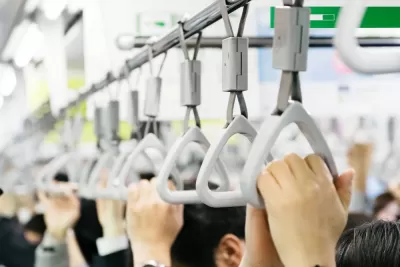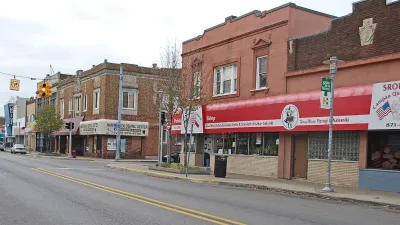A project launched several years ago in New York City is making its way to cities around the world—much like the bacteria that the world's billions of transit users transfer around the surfaces of subway trains, stations, and buses.

The Centre for Genomic Regulation put out a press release earlier this month announcing the latest developments in the MetaSUB research project: an unprecedented study of urban mass-transit systems and cities around the world with the goal of creating to establish a "DNA map" of the microbiomes found in mass transit systems.
According to the press release, "[m]ass transit systems represent unique urban biomes, microbiomes, and metagenomes," enabled by "perhaps one of the world’s largest, high-traffic, and universal built environments."
The release notes the invisible importance of the microbiome in the biological makeup of humans ("bacterial cells in and on our bodies outnumber human cells by a 10:1 ratio," for instance). According to the release, "[t]he data produced by the consortium will benefit city planners, public health officials, and designers, as well as the discovery of new species, biological systems, and biosynthetic gene clusters (BGCs), thus enabling an era of more quantified, responsive, and 'smarter cities.'"
June 21 was the "Global City Sampling Day" for the MetaSUB project. Barcelona is the latest large city to join the project, which began in 2013 in New York City. The New York City effort already produced a widely circulated microbiome map of that city's subway system.
FULL STORY: MAPPING THE SUBWAY’S MICROBIOME

Trump Administration Could Effectively End Housing Voucher Program
Federal officials are eyeing major cuts to the Section 8 program that helps millions of low-income households pay rent.

Planetizen Federal Action Tracker
A weekly monitor of how Trump’s orders and actions are impacting planners and planning in America.

Ken Jennings Launches Transit Web Series
The Jeopardy champ wants you to ride public transit.

Sacramento Plans ‘Quick-Build’ Road Safety Projects
The city wants to accelerate small-scale safety improvements that use low-cost equipment to make an impact at dangerous intersections.

How Project Connect Would Change ‘The Drag’
A popular — and sometimes deadly — Austin road will exchange car lanes for light rail.

Milwaukee Road to Get Complete Streets Upgrades
The city will reduce vehicle lanes and build a protected multi-use trail including bioswales and other water retention features on its ‘secret highway.’
Urban Design for Planners 1: Software Tools
This six-course series explores essential urban design concepts using open source software and equips planners with the tools they need to participate fully in the urban design process.
Planning for Universal Design
Learn the tools for implementing Universal Design in planning regulations.
Ada County Highway District
Clanton & Associates, Inc.
Jessamine County Fiscal Court
Institute for Housing and Urban Development Studies (IHS)
City of Grandview
Harvard GSD Executive Education
Toledo-Lucas County Plan Commissions
Salt Lake City
NYU Wagner Graduate School of Public Service



























